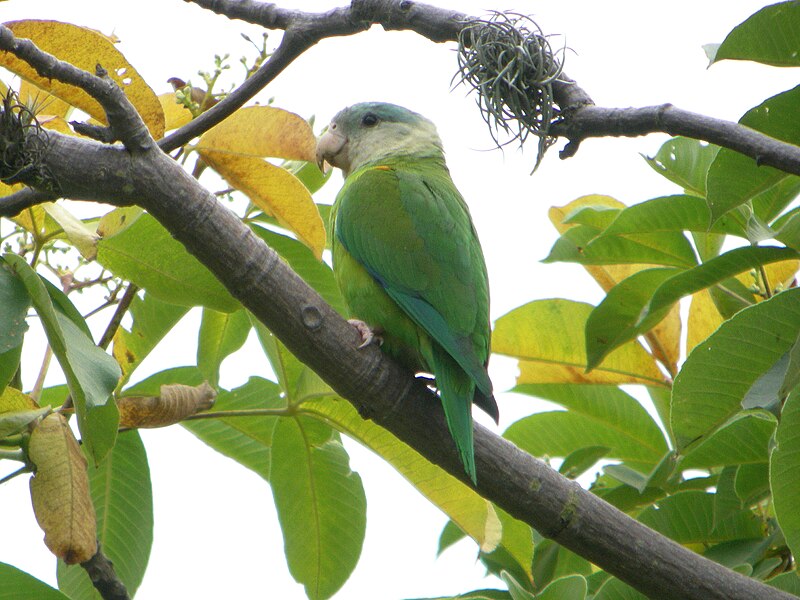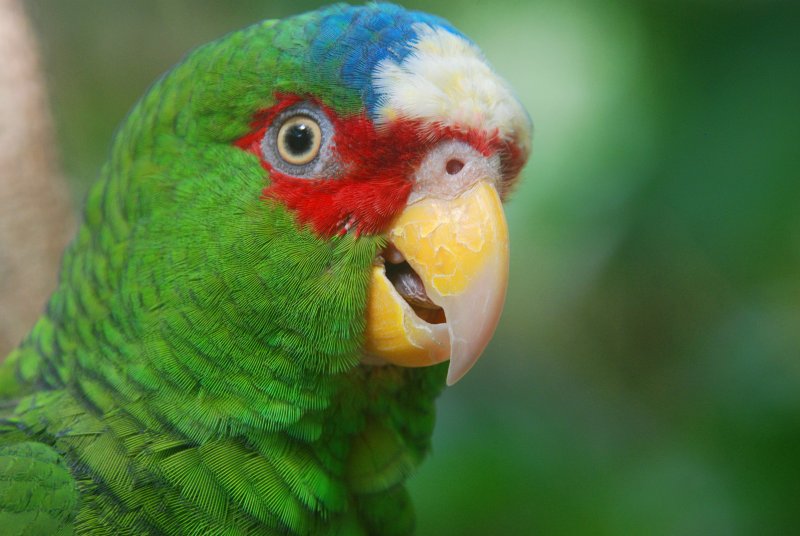 It’s very difficult to choose “bests” among parrots, because both bird and owner personalities and past experiences are so important. Parrots are very complex creatures, and within every species we find an incredible range of individual traits. With that in mind, today I’d like to highlight some parrots that, in general, are good choices for those new to parrot keeping and without the space needed for large species. I’ve chosen 5 that are often passed over by those without much experience, but which deserve a closer look. Please check the articles linked below or write in for more detailed information on their care.
It’s very difficult to choose “bests” among parrots, because both bird and owner personalities and past experiences are so important. Parrots are very complex creatures, and within every species we find an incredible range of individual traits. With that in mind, today I’d like to highlight some parrots that, in general, are good choices for those new to parrot keeping and without the space needed for large species. I’ve chosen 5 that are often passed over by those without much experience, but which deserve a closer look. Please check the articles linked below or write in for more detailed information on their care.
Peruvian Grey-Cheeked Parakeet, Brotogeris pyrrhopterus
Perhaps this little fellow’s somber plumage puts folks off, but what Grey-Cheeks lack in flash is surely made up for by a charming personality. Many bird fanciers consider them to be the best of all the small parrots, especially for novices. Grey-Cheeks are curious and take very well to training, bond readily to their owners, and imitate words and sounds fairly well.
Bee Bee Parrot, Brotogeris jugularis
Bee Bees were among my first parrots, and remain a favorite. Also known as the Orange-Fronted or Tovi Parakeet, this bird is a slightly larger, more colorful version of its cousin, the Peruvian Grey-Cheek. Bright green, stoutly built and 7.5 inches long, it reminds me of a minute Amazon Parrot.
The Bee Bee Parrot occupies a huge range that extends from southwestern Mexico to Peru, and wild populations adjust well to human presence. Perhaps this natural adaptability is what suits them so well to captivity. They require more fruit in the diet than do related species, but other than that Bee Bees are relatively undemanding. They will often breed in moderately-sized cages, and are small enough use Budgie nest boxes.
Senegal Parrot, Poicephalus senegalus
 Hailing from West Africa, the Senegal Parrot is gaily colored in yellow, green and grey. Its small size disguises an expansive personality…and a very powerful beak. However, Senegals are usually more shy than aggressive, and in the right hands become quite trusting. They have a truly amazing ability to learn tricks…please check out this video to see what I mean.
Hailing from West Africa, the Senegal Parrot is gaily colored in yellow, green and grey. Its small size disguises an expansive personality…and a very powerful beak. However, Senegals are usually more shy than aggressive, and in the right hands become quite trusting. They have a truly amazing ability to learn tricks…please check out this video to see what I mean.
Meyer’s Parrot, Poicephalus meyeri
Cousin to the Senegal, the Meyer’s Parrot is at home in Central and East Africa. Although reputed to be high strung and timid, I’ve found them to be no more or less so than related parrots. Meyer’s Parrots reach only 9 inches in length, but are quite active and should be given plenty of room and exercise. They are good mimics, and most affectionate to those they bond with.
Spectacled or White-Fronted Amazon, Amazona albifrons
Measuring 11 inches long and stoutly built, this is not actually a small parrot, but it is the smallest of the Amazons and most definitely deserving of more attention. It is also less expensive than its better-known cousins, although I cannot imagine why. Some will claim that Spectacled Amazons are “screamers”, but in most cases such people are not familiar with typical Amazon behavior. All Amazons are vocal…indeed, this is why they are such talented mimics.
More so than the other birds described here, the Spectacled Amazon is only suited for those with a great deal of time and energy to devote to its care…think in terms of “companion” rather than “pet”.
Further Reading
Spectacled Amazon Natural History
Brotogeris pyrrhopterus image referenced from wikipedia and originally posted by Markaharper1
Juvenile Senegal Parrot image referenced from wikipedia and originally posted by Brian Holsclaw
Amazona albifrons image referenced from wikipedia and originally posted by Sumba
 That Bird Blog – Bird Care and History for Pet Birds
That Bird Blog – Bird Care and History for Pet Birds




